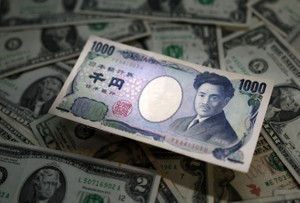By RYO SASAKI/ Staff Writer
November 6, 2023 at 18:31 JST
 Torishima island in the Izu island chain south of Tokyo on Oct. 20 (Provided by the Japan Coast Guard)
Torishima island in the Izu island chain south of Tokyo on Oct. 20 (Provided by the Japan Coast Guard)
The mystery over the tsunami that formed in the Pacific Ocean on Oct. 9 deepened as researchers found that a series of 13 tsunami were generated over 90 minutes on that day.
The latter six tsunami overlapped each other, amplifying the waves to twice their original height, the research team said.
The tsunami on Oct. 9 was observed over a wide area of Japan along the Pacific, including the main islands of Honshu, Kyushu and Shikoku, but how it was generated remains a mystery.
The research team analyzed records of tsunami observed at 16 points on the seafloor south of Honshu and found 13 occurred between around 5 a.m. and 6:30 a.m.
Osamu Sandanbata, an assistant professor of geophysics at the University of Tokyo’s Earthquake Research Institute who is a member of the team, said he was surprised by the study results.
“I have never heard of a tsunami occurring more than 10 times in a row over such a short period of time,” he said. “I want to further research what was happening on the seafloor.”
The interval between the tsunami gradually shortened.
For the six that occurred in the latter half of the series, the tsunami cycle overlapped that of the previous one, doubling their height.
The researchers used data from the Dense Oceanfloor Network system for Earthquakes and Tsunamis, known as DONET, at the National Research Institute for Earth Science and Disaster Resilience.
The study results were submitted to an academic journal of the American Geophysical Union. A preprint, or a pre-peer review article, was released on Nov. 1 (https://doi.org/10.22541/essoar.169878726.62136311/v1).
The tsunami on Oct. 9 measured 60 centimeters in Yaene on Tokyo’s Hachijojima island, 40 cm in Tosa-Shimizu in Kochi Prefecture, and 30 cm at Mera in Tateyama in Chiba Prefecture and Minami-Osumi in Kagoshima Prefecture.
In a sea area about 100 kilometers southwest of Torishima island in the Izu island chain, which is believed to be the source of the tsunami, seismic activities had been observed from Oct. 2 to around Oct. 9.
However, no major earthquakes were detected at the time of the tsunami on Oct. 9.
In a sea area about 50 km west of Torishima, floating material believed to be pumice was found extending about 80 km from north to south on Oct. 20.
The Japan Meteorological Agency collected pumice stones around the area on Oct. 27-31.
The University of Tokyo’s Earthquake Research Institute and the National Institute of Advanced Industrial Science and Technology will analyze the stones and whether they are related to an earthquake or tsunami.




















Stories about memories of cherry blossoms solicited from readers
Cooking experts, chefs and others involved in the field of food introduce their special recipes intertwined with their paths in life.
A series based on diplomatic documents declassified by Japan’s Foreign Ministry
A series on the death of a Japanese woman that sparked a debate about criminal justice policy in the United States
A series about Japanese-Americans and their memories of World War II
Here is a collection of first-hand accounts by “hibakusha” atomic bomb survivors.